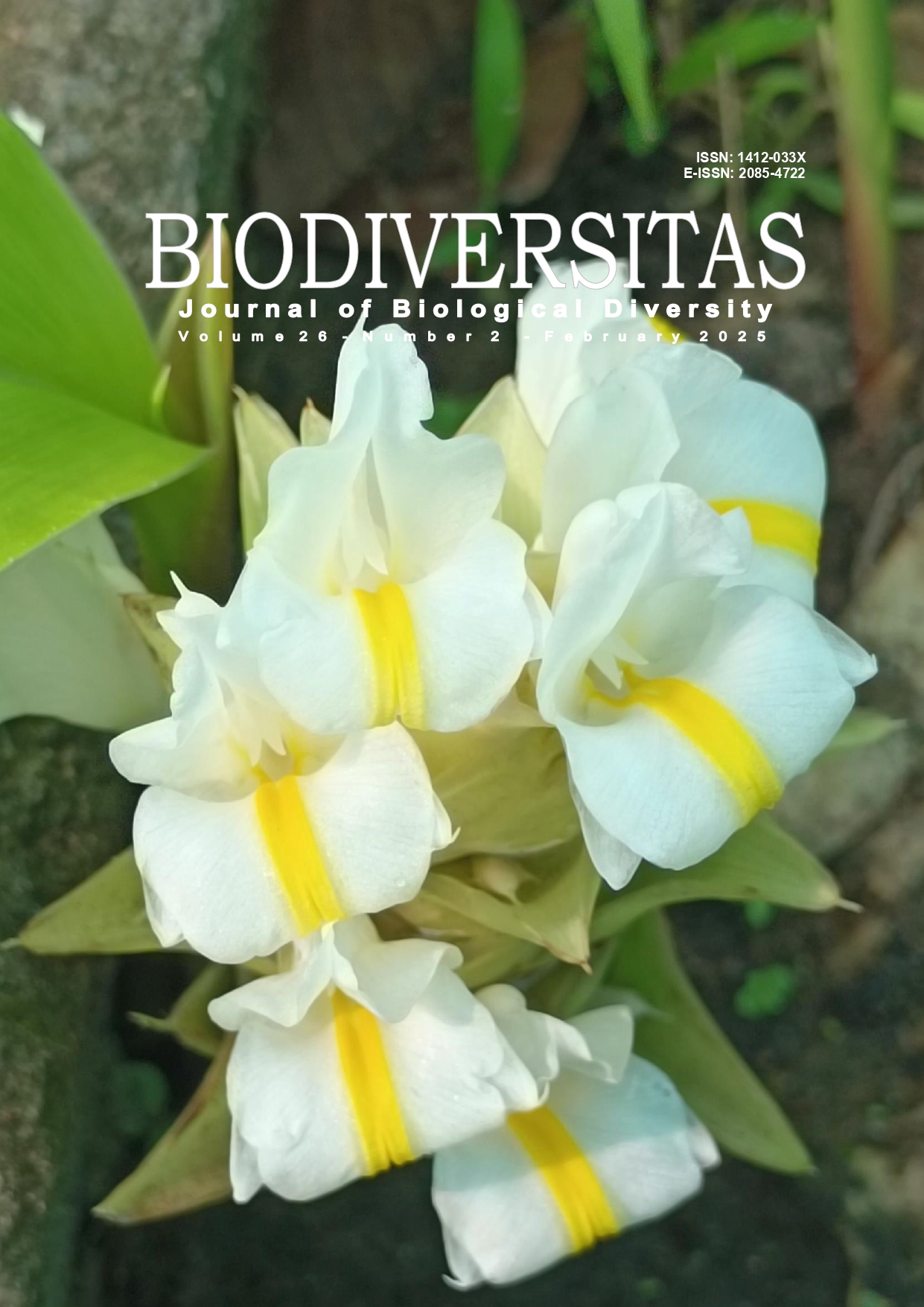Variability of agronomic characters and seed quality of 12 sorghum (Sorghum bicolor) genotypes
##plugins.themes.bootstrap3.article.main##
Abstract
Abstract. Kusumawardana A, Ilyas S, Qadir A, Trikoesoemaningtyas, Human S. 2025. Variability of agronomic characters and seed quality of 12 sorghum (Sorghum bicolor) genotypes. Biodiversitas 26: 628-635. Sorghum is a nutrient-rich food crop, an alternative commodity to substitute rice and other cereal crops, and can be grown on dry land; thus, it is important for food diversification to support food security and sustainable agriculture development in Indonesia. Utilization of high-quality seeds of superior varieties will improve sorghum productivity and quality. This study aimed to characterize the performance of 12 sorghum genotypes and identify potential lines for developing superior varieties. The planting materials used were nine BRIN sorghum lines (GHP-2, GHP-16, CTY-43, GH-1, GH-7, GH-9, G-5, G-7, G-8) and three national varieties (Bioguma 1, Pahat, Samurai 2). This research was conducted from June to October 2024 at the Institut Pertanian Bogor Leuwikopo Experimental Farm, Bogor, and Seed Quality Testing Development Center for Food Crops and Horticulture, Depok, West Java, Indonesia. The experimental design was a single-factor (genotypes) randomized complete block design with four replications. Seeds were planted in plots of 1x2.8 m with a spacing of 70x20 cm. Observations were made on agronomic characters and seed quality. The characters of plant height, 1000-seed weight, flowering age, and seed weight per plot significantly differed among genotypes. GH-9 line showed the highest productivity (2467.61 g seeds per plot) and 1000-seed weight (33.7 g). Of the 12 genotypes tested, the flowering ages ranged from 57 to 65 days after planting, with the fastest flowering age (57 days) on the CTY-43 line. Plant height measurements showed the lowest plant height (123.4 cm) on GHP-16, while the highest was GH-7 (228.9 cm).

